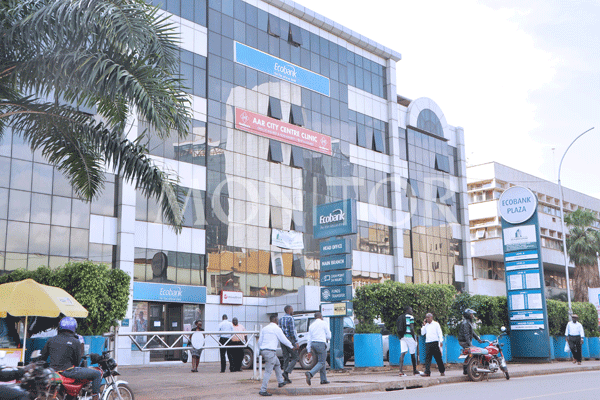Prime
License fees for banks increased

Bank of Uganda says new commercial banks will be required to pay Shs50m for an operating license while existing ones will have to pay 0.05 percent of their gross annual revenue while renewing their licenses. PHOTO | EDGAR R BATTE
What you need to know:
- Bank of Uganda says the increase seeks to harmonise Uganda’s license fees with those of other member countries within the East African Community.
Bank of Uganda has increased license fees for supervised financial institutions in a bid to harmonise the licensing regime with other East African Community member states.
According to the Bank of Uganda annual supervision report released last week, the Central Bank said in November last year it had revised the annual licence fees for commercial banks, credit institutions and micro deposit-taking institutions with the rates taking effect in January.
For instance, the report indicated, licence application fees for a new commercial bank rose from Shs2m to Shs50m while that of a new credit institution increased from Shs2m to Shs30m. A new micro deposit-taking institutions is now required to pay Shs20m down from Shs2m.
Existing commercial banks, credit institutions and micro deposit-taking institutions, the report notes, will pay 0.05 percent of their gross annual revenue when they seek a renewal.
The move, the Central Bank said, is part of the wider plan to harmonies banking regulations within East Africa.
The East Africa Community has been pursuing a number of changes in a bid to harmonise the bloc’s financial systems as the bloc pushes for the attainment of a single currency by 2024.
While addressing the business community in Kinshasha, DR Congo recently, EAC Affairs Minister Rebecca Kadaga, said the region was on track to achieve a single monetary union by 2024.
Meanwhile, the report also indicated that during the period ended December 2021, bank branches increased by 46 from 566 in 2020 to 614 branches, along with an increase of 46 automated teller machines operated by commercial banks from 837 to 886.
The increase was largely due to Postbank’s transformation into a commercial bank, which increased its network to 56 branches, supported by 55 automated teller machines.
During the period, the Central Bank also noted that commercial banks had registered their strongest growth in credit, which expanded by 8.8 percent to Shs17.7 trillion while credit by micro deposit-taking institutions increased by 2.3 percent. Credit institutions saw loans expand by 58.4 percent.
Credit institutions reduced from five to four, following the transformation of Postbank into a commercial bank, followed by a decrease in assets held by credit institutions by Shs.643.7b from Shs.1.062 trillion.
Net loans and advances under credit institutions dropped by Shs.338.8b to Shs.235.9b, while total deposits reduced by Shs.367.4b to Shs.226.3b.
During the period, the Central Bank indicated that the micro deposit-taking institutions sub-sector comprised of four microfinance, whose total assets marginally increased by Shs.3.6b from Shs.743.3b to Shs.746.9b, largely due to an increase in investment in government securities.
Total liabilities decreased by Shs.1.3b from Shs.538.5b to Shs.537.2b mainly due to a decrease of Shs.28.6b in long-term borrowings.





